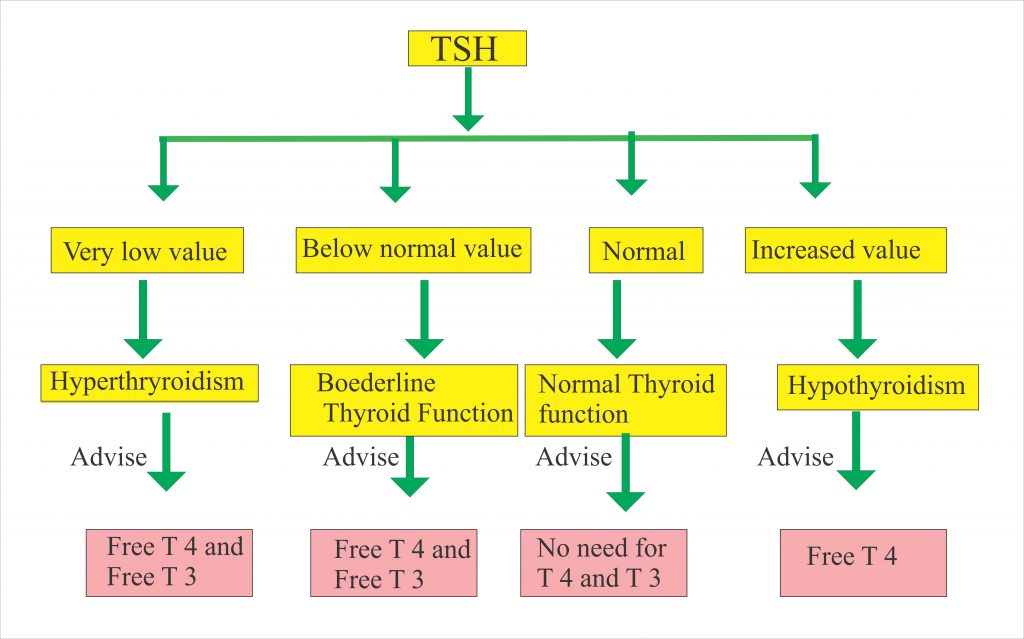

In healthy, non-hospitalized people, measurement of reverse T3 does not help determine whether hypothyroidism exists or not, and is not clinically useful. Some reverse T3 is produced normally in the body, but is then rapidly degraded. Reverse T3 is a biologically inactive protein that is structurally very similar to T3, but the iodine atoms are placed in different locations, which makes it inactive.
#Normal tsh levels free
Measurement of free T3 is possible, but is often not reliable and therefore not typically helpful. Patients can be severely hypothyroid with a high TSH and low FT4 or FTI, but have a normal T3. T3 testing rarely is helpful in the hypothyroid patient, since it is the last test to become abnormal. In some individuals with a low TSH, only the T3 is elevated and the FT4 or FTI is normal. Patients who are hyperthyroid will have an elevated T3 level. T3 tests are often useful to diagnosis hyperthyroidism or to determine the severity of the hyperthyroidism. A low TSH with an elevated FT4 or FTI is found in individuals who have hyperthyroidism. A low TSH and low FT4 or FTI indicates hypothyroidism due to a problem involving the pituitary gland. The finding of an elevated TSH and low FT4 or FTI indicates primary hypothyroidism due to disease in the thyroid gland. Tests measuring free T4 – either a free T4 (FT4) or free T4 index (FTI) – more accurately reflect how the thyroid gland is functioning when checked with a TSH. A Free T4 measures what is not bound and able to enter and affect the body tissues. A Total T4 measures the bound and free hormone and can change when binding proteins differ (see above). T4 is the main form of thyroid hormone circulating in the blood. In most healthy individuals, a normal TSH value means that the thyroid is functioning properly. Occasionally, a low TSH may result from an abnormality in the pituitary gland, which prevents it from making enough TSH to stimulate the thyroid (secondary hypothyroidism). The opposite situation, in which the TSH level is low, usually indicates that the thyroid is producing too much thyroid hormone (hyperthyroidism). A high TSH level indicates that the thyroid gland is not making enough thyroid hormone (primary hypothyroidism). Changes in TSH can serve as an “early warning system” – often occurring before the actual level of thyroid hormones in the body becomes too high or too low. The best way to initially test thyroid function is to measure the TSH level in a blood sample. Tests to evaluate thyroid function include the following: TESTSīlood tests to measure these hormones are readily available and widely used, but not all are useful in all situations. The “free” T4 or T3 is the hormone that is unbound and able to enter and affect the body tissues. This frequently happens during pregnancy and with the use of birth control pills. If the levels of these transport proteins changes, there can be changes in how much bound T4 and T3 is measured. T4 and T3 circulate almost entirely bound to specific transport proteins. Thus, the thyroid and the pituitary, like a heater and thermostat, turn on and off. When the heat rises to an appropriate level, the thermostat senses this and turns off the heater.

When the heater is off and it becomes cold, the thermostat reads the temperature and turns on the heater. In fact, the thyroid and pituitary act in many ways like a heater and a thermostat. Once the T4 in the bloodstream goes above a certain level, the pituitary’s production of TSH is shut off.

If the pituitary sees very little T4, then it produces more TSH to tell the thyroid gland to produce more T4. The amount of TSH that the pituitary sends into the bloodstream depends on the amount of T4 that the pituitary sees. The amount of T4 produced by the thyroid gland is controlled by another hormone, which is made in the pituitary gland located at the base of the brain, called thyroid stimulating hormone (abbreviated TSH). This occurs mainly in the liver and in certain tissues where T3 acts, such as in the brain. To exert its effects, T4 is converted to triiodothyronine (T3) by the removal of an iodine atom. The major thyroid hormone secreted by the thyroid gland is thyroxine, also called T4 because it contains four iodine atoms. Thyroid hormones help the body use energy, stay warm and keep the brain, heart, muscles, and other organs working as they should. The thyroid’s job is to make thyroid hormones, which are secreted into the blood and then carried to every tissue in the body. The thyroid gland is a butterfly-shaped endocrine gland that is normally located in the lower front of the neck.


 0 kommentar(er)
0 kommentar(er)
